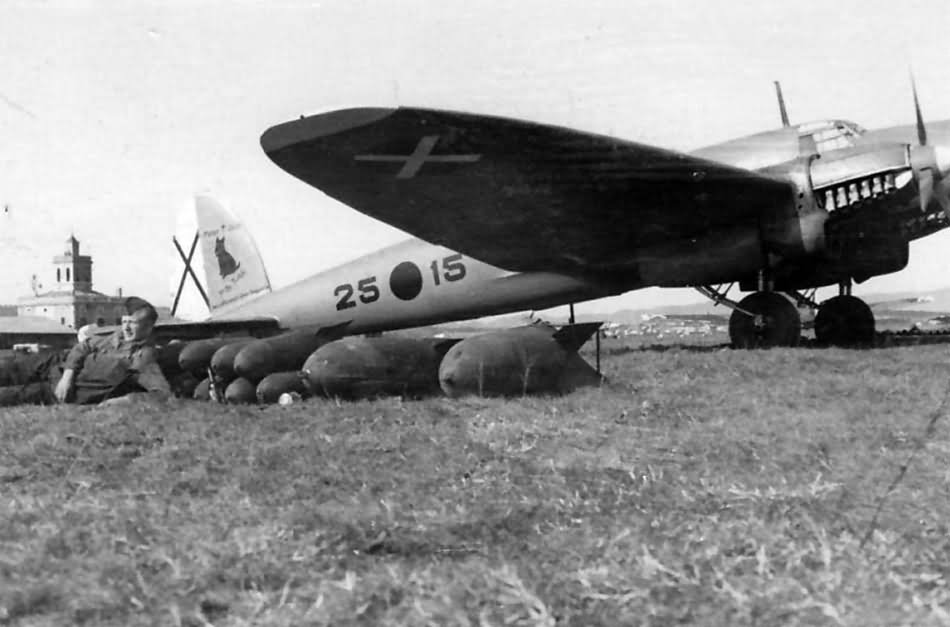Its baptism of fire occurred in Spain with the Legion Condor, marking the first operational use of this significant aircraft. The first He 111 B-1s entered Luftwaffe service in Germany in late 1936, but a substantial portion of early production was soon diverted to Spain for the Legion Condor, delaying re-equipment for other units.
In the Spanish Civil War, an experimental bomber Staffel designated VB 88 was formed under Hauptmann Rudolph von Moreau, initially equipped with a mix of Do 17E, Ju 86D, and He 111B-0 bombers. The He 111s in this unit were affectionately known as ‘Pedros’. The Heinkel quickly proved its superiority over other types, leading to its full adoption as the Legion’s standard bomber, equipping VB 88 entirely. A total of nearly 100 He 111s were to serve in Spain.
The operational debut for the Heinkels came on March 9, 1937, when they bombed Republican airfields around Madrid. Following initial raids in the central region, the aircraft were transferred to the northern front later that month. The He 111-equipped unit was then integrated into the Legion’s existing Kampfgruppe as 4.K/88, and all three of K/88’s original Staffeln were subsequently re-equipped with the new Heinkels. By March 1939, 97 He 111s had been supplied to Spain. The Republic surrendered at the end of March 1939, and the surviving Heinkels remained in service with the Spanish Air Force until the late 1950s.
While the He 111 demonstrated its capabilities, it wasn’t invincible. The Legion Condor experienced its first combat losses in August 1937, with two Heinkels shot down near Santander and another over Gijon. Losses also occurred due to the transfer of He 111 Bs to the Spanish Nationalist Air Force.
Several variants of the He 111 were employed by the Legion Condor:
- He 111B-0, B-1, and B-2: These were among the initial types delivered, with the B-1 being the first mass-production bomber variant. The B-1 had a cruising speed of 345 km/hr (214 mph), a 4,000m (13,120 ft) operational ceiling, and a 910 km (565 miles) range with a 1,500 kg (3,307 lb) bomb load. They were typically armed with three 7.9mm MG 15 machine guns, including an Ikaria gun mounting in the nose.
- Examples include ‘Pedro 15’ (coded 25.15) and ‘Pedro 1’ (coded 25.3) from K/88/VB/88 in 1937. Another He 111B-1 was coded 25.17. The He 111B-2 coded 25.26 belonged to 2.K/88 in 1938.
- He 111E: These variants arrived later, particularly in early 1939, and featured increased bomb-carrying capacity, with some models equipped with external racks for up to 1,000 kg (2,205 lb) bombs. The He 111E-1 coded 25.91 was with 4.K/88 in early 1938. The He 111E-1 (25-92) was operated by Kampfgruppe 88 in 1937-1938.
The aircraft sported various markings: early machines often had unique personal and unit emblems, such as a chimney sweep on the tailfin of ‘25.17’ or a tribute to a pet Scottie dog named ‘Peter’ on ‘25.15’. The “Diving Eagle with Bomb” motif, initially a personal marking of Oberleutnant von Moreau, later became the badge of 4.K/88 and subsequently the Geschwader emblem of KG 53 ‘Legion Condor’ during World War II. From around aircraft ‘25.30’ onwards, the He 111s in Spain adopted the standard pre-war Luftwaffe three-tone splinter camouflage.
The He 111’s service in Spain provided invaluable combat experience that shaped its future development and role in the Luftwaffe.
